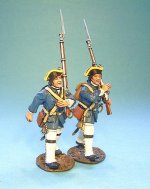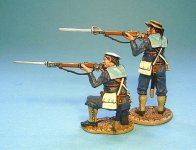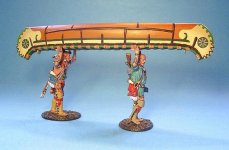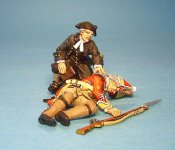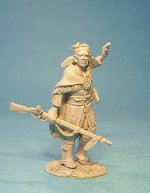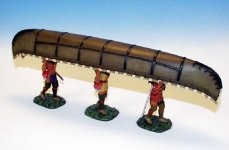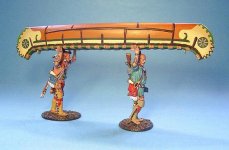Good morning from an unseasonably warm Northern California, where believe it or not we are looking forward to next week, as a large and significant rain Storm, is coming in from Hawaii. Who ever would have thought a Brit would look forward to rain.
Good news; all the new release items for February are now in stock and looking good. But just to tickle your fancy we have even more great releases for March. For these coming to the West Coaster we hope to have, not a promise these available or a least be able to preview them for you.
We hope to have them on the web site later today.
www.sierratoysoldier.com
Don’t miss out on the club sets, not only are these good but there is still some more amazing pieces to come.
Hope you like the new releases and hope to see you at the West Coaster.
Best regards
Mike
Sierra Toy Soldier Company.
KNIGHTS OF THE SKIES
No.46 Squadron’s leading ace was Canadian Donald Roderick Maclaren. His first kill was claimed on 6 March 1918, and 3 months later it had progressed to an amazing 32. All victories were achieved in four different Sopwith Camels.
Captain Maclaren used Camel F2137 “U” to claim his last nine victories during September- October 1918. This brought his total tally to 54 Kills.
ACE-04
KNIGHTS OF THE SKIES
SOPWITH CAMEL, F2137
Captain D. R. Maclaren,
No. 46 Sqn. Athies, October 1918
(1pcs)
Not Limited Edition
Retail us$188
Model Weight 138g
SCALE 1/30
MODEL DIMENSIONS approx 11 ½” x 7” x 4”
MATERIALS Mixed Media,
THE JACOBITE REBELLION 1745
The Scottish Lowlands is a term that can refer to the 'the non-Gaelic region' in Scotland, and was called in the Scotts language the Lawlands or Lallans. Although it was not officially a geographical area of the country, in normal usage is generally meant to include those parts of Scotland not referred to as the Highlands (or Gàidhealtachd), that is, everywhere due south and east of a line (the Highland Boundary Fault) between Stonehaven and Helensburgh (on the Firth of Clyde). Confusingly, some parts of the Lowlands, such as the Southern Uplands are not physically 'low', and some sections of the Highlands, such as Islay are low-lying.
Jacobite Regiments were known to include large numbers of lowland companies. Some felt that these regiments were less “wild” than the ones from the west. The real difference was that the regiment was raised by the personal exertions of their officers rather than called or forced out as clan levies.
Stoneywood raised the second battalion of Lord Lewis Gordon’s Regiment in the Aberdeen area, and although he was instructed “You’ll advert what men you recieve be sufficientelie furnished with plaids, short cloathes, hose, shoes and by all means swords with what other arms can be got”, evidence shows that most men in this and other lowland battalions simply wore their own everyday clothes.
JR-23
THE JACOBITE REBELLION 1745
Lowland Infantry Attacking With Musket #1
2 Figure (2pc)
Limited Edition 500
Retail us$62
THE BATTLE OF THE PLAINS OF ABRAHAM 1759
Late in 1754, Britain dispatched two battalions of regulars, under the command of MajorGeneral Edward Braddock, to North America. When news of the British plans reached Paris, six battalions of French line infantry were ordered to proceed to New France to counter the British move. The battalions were from the regiments of Artois, Bourgogne, Bearn, Guyenne, La Reine, and Languedoc.
The French troops sailed for Canada early in May 1755, accompanied by their commander, Baron Dieskau, and the Marquis de Vaudreujl, who was to replace the ailing Duquesne as Governor of New France. During the voyage, eight companies of regulars were lost when the vessels Alcide and Lys were captured by the British and four companies of both the Languedoc and La Reine battalions were taken prisoner. The Artois and Bourgogne regiments disembarked at the fortress of Louisbourg, and the remaining four battalions proceeded to Quebec.
A full-strength French regular battalion of the period numbered thirty-one officers and 525 soldiers, divided into one grenadier and twelve fusilier companies. As the four companies lost to the Royal Navy were not replaced until late 1757, the regiment de Languedoc began its service in Canada badly under strength.
The Marquis de Montcalm arrived early in the summer of 1756 to replace the unfortunate Dieskau. Under the leadership of this able commander the regiment de Languedoc took part in the capture of Fort William Henry in 1757, and in the successful defence of Ticonderoga in 1758.
When Montcalm drew up his army on the Plains of Abraham to face Wolfe's regulars on 13 September 1759, the Languedoc battalion stood third from the right in the French line of battle. The regiment also formed part of the French force that returned to Quebec in the spring of 1760 to defeat the British at the Battle of Sainte-Foy. The arrival of the British fleet broke the siege of Quebec, and Levis withdrew his troops to Montreal to carry on the unequal struggle. On September 8, the French capitulated; six days later, the Languedoc battalion embarked for France.
QF-25
BATTLE OF THE PLAINS OF ABRAHAM,
13th September 1759,
REGIMENT DE LANGUEDOC
2 x Line Infantry in Summer Dress, Marching
(2pcs)
Limited Edition 750
Retail us$60
THE FIRST SUDAN WAR 1884-1885
When landed for service in a naval brigade, the individual seaman was armed with a rifle and a cutlass-bayonet. When fixed as a bayonet, the cutlass-bayonet made the rifle very muzzle-heavy and even less accurate than it already was in the hands of the sailors.
SRN-03
THE FIRSTSUDAN WAR 1884-1885
BRITISH NAVAL BRIGADE
2 Figures Firing #2
(2pcs)
NOT Limited Edition
Retail us$60
THE RAID ON ST. FRANCIS
RSF-08
RAID ON ST. FRANCIS,
WOODLAND INDIANS CARRYING A CANOE
(5pc)
Limited Edition 500
Retail us$105
Hope you liked the new releases.
Best regards
Mike
Sierra Toy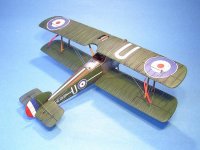
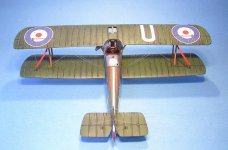
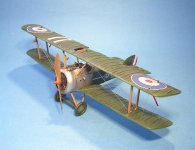
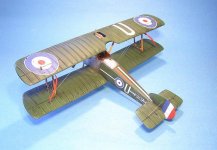
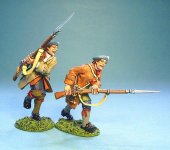 Soldier Company
Soldier Company
Good news; all the new release items for February are now in stock and looking good. But just to tickle your fancy we have even more great releases for March. For these coming to the West Coaster we hope to have, not a promise these available or a least be able to preview them for you.
We hope to have them on the web site later today.
www.sierratoysoldier.com
Don’t miss out on the club sets, not only are these good but there is still some more amazing pieces to come.
Hope you like the new releases and hope to see you at the West Coaster.
Best regards
Mike
Sierra Toy Soldier Company.
KNIGHTS OF THE SKIES
No.46 Squadron’s leading ace was Canadian Donald Roderick Maclaren. His first kill was claimed on 6 March 1918, and 3 months later it had progressed to an amazing 32. All victories were achieved in four different Sopwith Camels.
Captain Maclaren used Camel F2137 “U” to claim his last nine victories during September- October 1918. This brought his total tally to 54 Kills.
ACE-04
KNIGHTS OF THE SKIES
SOPWITH CAMEL, F2137
Captain D. R. Maclaren,
No. 46 Sqn. Athies, October 1918
(1pcs)
Not Limited Edition
Retail us$188
Model Weight 138g
SCALE 1/30
MODEL DIMENSIONS approx 11 ½” x 7” x 4”
MATERIALS Mixed Media,
THE JACOBITE REBELLION 1745
The Scottish Lowlands is a term that can refer to the 'the non-Gaelic region' in Scotland, and was called in the Scotts language the Lawlands or Lallans. Although it was not officially a geographical area of the country, in normal usage is generally meant to include those parts of Scotland not referred to as the Highlands (or Gàidhealtachd), that is, everywhere due south and east of a line (the Highland Boundary Fault) between Stonehaven and Helensburgh (on the Firth of Clyde). Confusingly, some parts of the Lowlands, such as the Southern Uplands are not physically 'low', and some sections of the Highlands, such as Islay are low-lying.
Jacobite Regiments were known to include large numbers of lowland companies. Some felt that these regiments were less “wild” than the ones from the west. The real difference was that the regiment was raised by the personal exertions of their officers rather than called or forced out as clan levies.
Stoneywood raised the second battalion of Lord Lewis Gordon’s Regiment in the Aberdeen area, and although he was instructed “You’ll advert what men you recieve be sufficientelie furnished with plaids, short cloathes, hose, shoes and by all means swords with what other arms can be got”, evidence shows that most men in this and other lowland battalions simply wore their own everyday clothes.
JR-23
THE JACOBITE REBELLION 1745
Lowland Infantry Attacking With Musket #1
2 Figure (2pc)
Limited Edition 500
Retail us$62
THE BATTLE OF THE PLAINS OF ABRAHAM 1759
Late in 1754, Britain dispatched two battalions of regulars, under the command of MajorGeneral Edward Braddock, to North America. When news of the British plans reached Paris, six battalions of French line infantry were ordered to proceed to New France to counter the British move. The battalions were from the regiments of Artois, Bourgogne, Bearn, Guyenne, La Reine, and Languedoc.
The French troops sailed for Canada early in May 1755, accompanied by their commander, Baron Dieskau, and the Marquis de Vaudreujl, who was to replace the ailing Duquesne as Governor of New France. During the voyage, eight companies of regulars were lost when the vessels Alcide and Lys were captured by the British and four companies of both the Languedoc and La Reine battalions were taken prisoner. The Artois and Bourgogne regiments disembarked at the fortress of Louisbourg, and the remaining four battalions proceeded to Quebec.
A full-strength French regular battalion of the period numbered thirty-one officers and 525 soldiers, divided into one grenadier and twelve fusilier companies. As the four companies lost to the Royal Navy were not replaced until late 1757, the regiment de Languedoc began its service in Canada badly under strength.
The Marquis de Montcalm arrived early in the summer of 1756 to replace the unfortunate Dieskau. Under the leadership of this able commander the regiment de Languedoc took part in the capture of Fort William Henry in 1757, and in the successful defence of Ticonderoga in 1758.
When Montcalm drew up his army on the Plains of Abraham to face Wolfe's regulars on 13 September 1759, the Languedoc battalion stood third from the right in the French line of battle. The regiment also formed part of the French force that returned to Quebec in the spring of 1760 to defeat the British at the Battle of Sainte-Foy. The arrival of the British fleet broke the siege of Quebec, and Levis withdrew his troops to Montreal to carry on the unequal struggle. On September 8, the French capitulated; six days later, the Languedoc battalion embarked for France.
QF-25
BATTLE OF THE PLAINS OF ABRAHAM,
13th September 1759,
REGIMENT DE LANGUEDOC
2 x Line Infantry in Summer Dress, Marching
(2pcs)
Limited Edition 750
Retail us$60
THE FIRST SUDAN WAR 1884-1885
When landed for service in a naval brigade, the individual seaman was armed with a rifle and a cutlass-bayonet. When fixed as a bayonet, the cutlass-bayonet made the rifle very muzzle-heavy and even less accurate than it already was in the hands of the sailors.
SRN-03
THE FIRSTSUDAN WAR 1884-1885
BRITISH NAVAL BRIGADE
2 Figures Firing #2
(2pcs)
NOT Limited Edition
Retail us$60
THE RAID ON ST. FRANCIS
RSF-08
RAID ON ST. FRANCIS,
WOODLAND INDIANS CARRYING A CANOE
(5pc)
Limited Edition 500
Retail us$105
Hope you liked the new releases.
Best regards
Mike
Sierra Toy




 Soldier Company
Soldier Company

